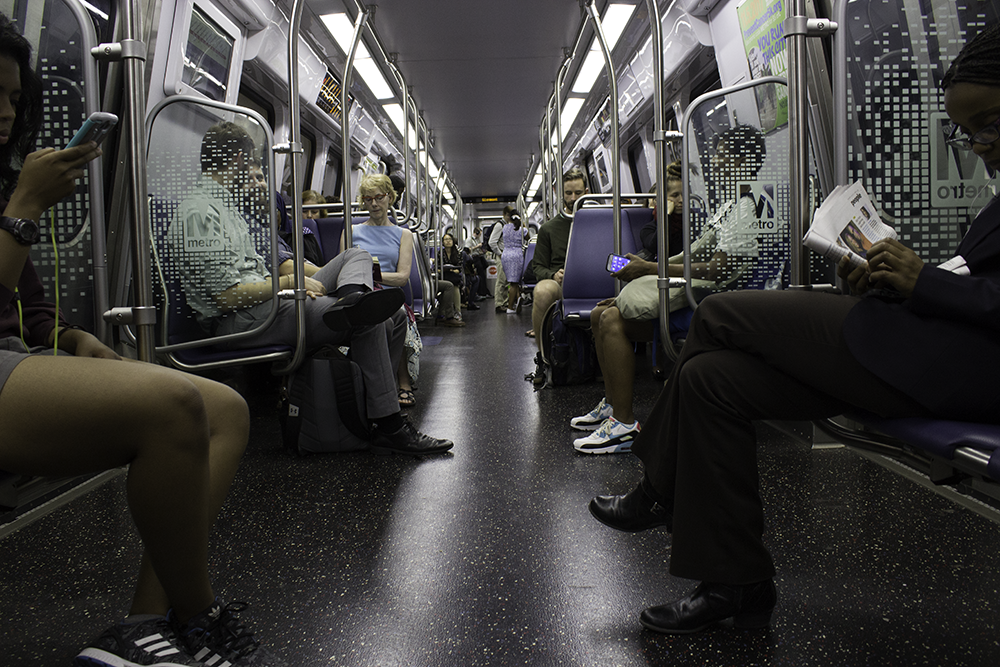Two out of service six-car trains collided outside Farragut West at 12:54 a.m. Oct. 7 causing delays and overcrowding across three Metro lines, as authorities opened an investigation into the incident.
The crash occurred when Train 700 crashed into the immobile Train 755 at 11 mph outside Farragut West Station, according to statements released by the Washington Metropolitan Area Transit Authority. The trains were being moved back to their home railyards, and the only people on board at the time of the crash were the two operators.

Although both operators initially observed stop commands coming through the signaling system and each train came to a full stop, Train 700 eventually accelerated and collided with Train 755, according to an Oct. 7 WMATA news release.
“Event recorders show Train 755 and Train 700 responded to the signal system commands and came to a stop, as required,” the news release reads. “The investigation is currently working to establish the sequence of events between Train 700 coming to a stop and the collision with Train 755.”
The crash resulted in delays and packed platforms for Blue, Silver and Orange Line commuters on Monday, with effects lasting through Tuesday, Oct. 8. WMATA tweets and press releases outlined 15-minute delays during the entire day of the accident.
While a 6:44 a.m. tweet from WMATA on Tuesday claimed normal operations had resumed, customers like Julie Malear pushed back.
“From someone who just spent 24 mins waiting for a blue line toward Fraconica at this station, I’d say normal operations have not resumed,” Malear wrote in a tweet.
Georgetown students were also affected by Monday’s delays, including Timothy Tan (COL ’23), a commuter student who makes a daily route from northern Virginia to Georgetown.
“The trains were disrupted a bit because of the crash,” Tan said in an interview with The Hoya. “Usually my commute takes about 30 or 40 minutes on the Metro, but it took probably an hour yesterday.”
Because of the delay, the trains were very tight on space as commuters were anxious to get on the next train home, according to Tan.
“They were running basically two lines in one train, so there were twice as many people on each train,” he said. “It was very packed. People had to shove their way through to get on.”
Investigators have concluded that the crash was not a signaling error problem and relayed that human factors as a possible cause of the crash were being considered, according to WMATA.
“Data analysis shows that all trains were properly detected by the signal system, and appropriate speed commands were sent to the trains to maintain safe spacing,” the Oct. 7 release said. “The investigation is also reviewing human factors as a possible cause.”
The operators of both trains were given mandatory drug and alcohol tests and will remain out of service for the remainder of the investigation.
The WMATA takes a holistic approach when investigating potentially employee-related incidents, according to Dan Stessel, chief communications officer for the WMATA.
“The investigation will take into account all of the factors, including the employee’s work history, results of toxicology tests, interviews and statements, as well as possible contributing factors such as fatigue, outside employment, changes to work schedule/overtime, inattention due to prohibited electronic device use, etc.,” Stessel wrote in an email to The Hoya. “Based on a full review of all factors, Metro will apply disciplinary action in accordance with our policies and applicable labor agreements.”
Authorities have yet to determine the cause of the crash, however, as there is still more evidence to collect, according to Stessel.
“We want to make sure we have all of the information before we draw any formal conclusions,” Stessel wrote in an email with The Hoya. “We expect to have a root cause in the coming weeks.”
Metrorail accidents can be a way of exposing flaws in the system, according to Stessel.
“Metrorail carries between 650K-700K passenger trips on a typical weekday, and safety incidents are extremely rare. You have a greater risk of injury in a car, bike or scooter than you do on Metrorail,” Stessel said in an email with The Hoya. “That said, even one safety incident is too many, and that’s why you see a thorough investigation to understand exactly what happened and identify ways to make the system even safer going forward.”




















